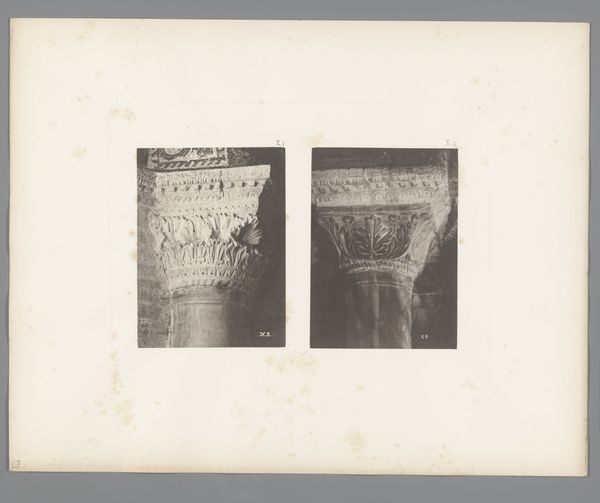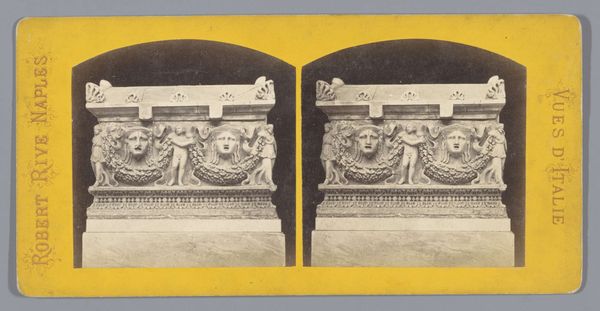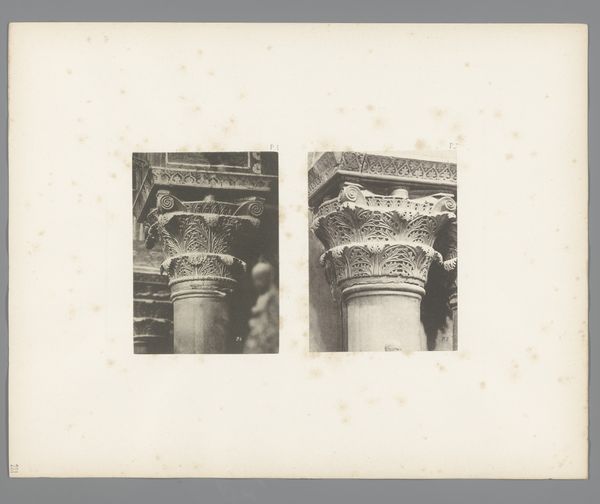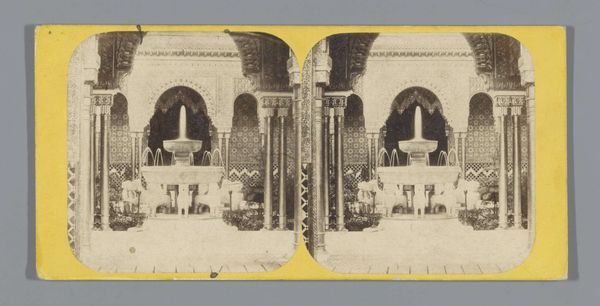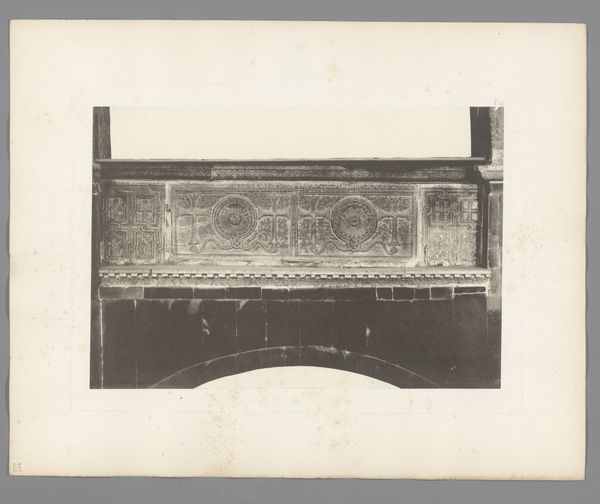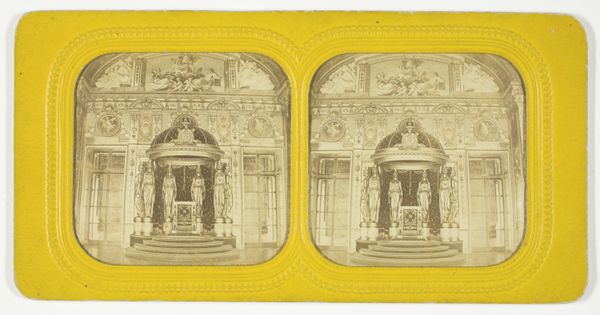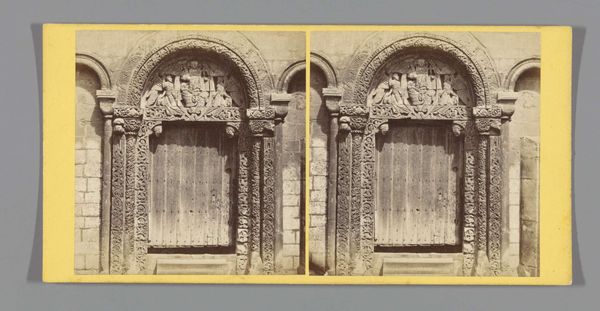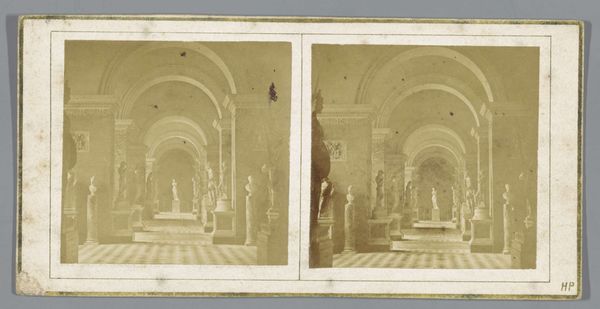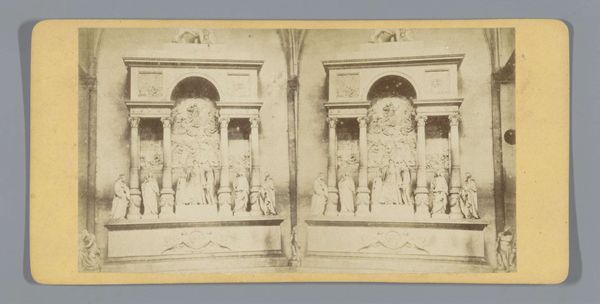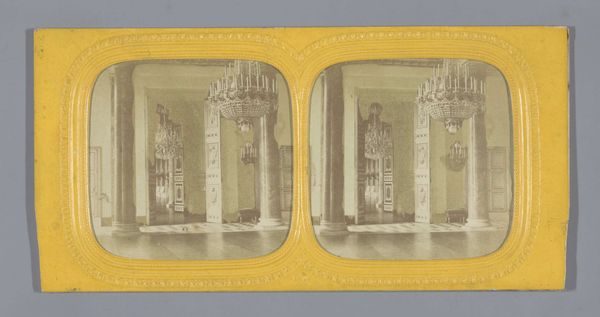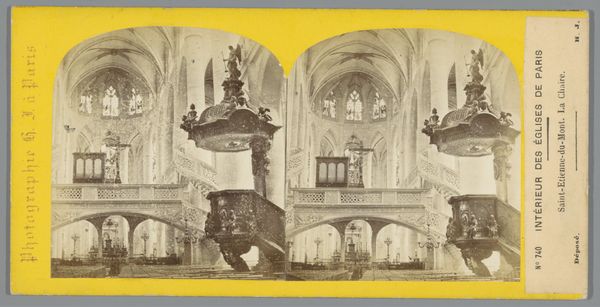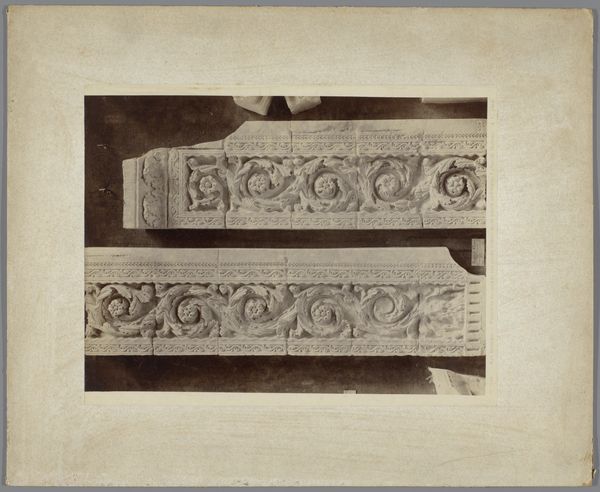
Fountain decorated with mosaic in Pompeii 1880
0:00
0:00
robertorive
Rijksmuseum, Amsterdam, Netherlands
print, photography
# print
#
landscape
#
photography
#
ancient-mediterranean
Copyright: Public domain
Editor: Here we have "Fountain decorated with mosaic in Pompeii," a print from 1880 by Roberto Rive. It feels like looking into the past, a very controlled, ordered past. What strikes me is the almost clinical depiction, yet this fountain would have been central to community life. What do you see in this piece? Curator: I see a deliberate capturing of a relic, yes, but one loaded with implications about power and societal structure. Consider how water, then as now, was a resource tied to control. Who had access? Who designed the mosaics, and what narratives were they meant to convey to those using the fountain? It becomes a locus for understanding ancient social dynamics through a lens of resource distribution and visual communication, right? Editor: Right, access makes me think of its function. Was this a private fountain or a public utility? And how did the imagery play into that? Curator: The Roman public fountains, like this one in Pompeii, were not just about fulfilling basic needs. Think of them as performative spaces, constructed to legitimize political authority and to establish an elite visual culture. Mosaics were seldom accidental; instead they frequently reinforced civic values or celebrated imperial power. Reflect on the politics inherent even in something seemingly utilitarian. Does seeing it that way change your perspective at all? Editor: Definitely! It shifts my view from simple observation to thinking about what messages the fountain conveyed about the hierarchy and authority of Roman society. It makes it more complicated, in a good way. Curator: Exactly. Even ruins hold narratives, prompting us to question power dynamics present then, and, by reflection, what hierarchies and visual symbols legitimize control now.
Comments
No comments
Be the first to comment and join the conversation on the ultimate creative platform.
